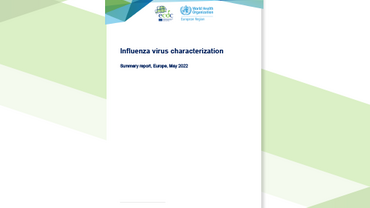Influenza virus characterisation, November 2014
In light of the emergence of antigenically distinct groups of influenza A(H3N2) and the altered prevalence of influenza B viruses, the WHO-recommended composition of influenza vaccines for use in the 2015 southern hemisphere influenza season differs from that recommended for use in the 2014–15 northern hemisphere influenza season.
Executive Summary
Based on reports submitted to TESSy, the 2014–15 influenza season has not yet started in the WHO European Region. Although an increasing number of countries are reporting sporadic influenza detections, overall numbers are low (less than 1400 over weeks 40–50/2014). Influenza type A is predominating over type B by a ratio of 3:1, with A(H3N2) viruses predominating over A(H1N1)pdm09 by a ratio of 5:1 and B/Yamagata lineage viruses predominating over B/Victoria by a ratio of 16:1.
To date, only eight specimens with collection dates after week 39/2014 have been received at the London WHO Collaboration Centre (CC): three A(H1N1)pdm09, four A(H3N2), and one B/Yamagata lineage. Only one H1N1pdm09 and two H3N2 viruses were recovered. National Influenza Centres (NICs) are encouraged to send influenza-positive specimens as soon as possible, and no later than week 6/2015, to allow the London WHO CC to conduct detailed characterisation in time for the February (week 9/2015) WHO Vaccine Consultation Meeting.
The A(H1N1)pdm09 virus, as those circulating worldwide, belonged to genetic subgroup 6B and was antigenically similar to the vaccine virus A/California/07/2009.
The A(H3N2) viruses fell in genetic subgroups 3C.3 and 3C.3a and were poorly recognised by antisera raised against the A/Texas/50/2012 vaccine virus but well recognised by antisera raised against cell-propagated 3C.3a viruses.
The unrecovered B/Yamagata lineage virus fell in genetic clade 3 as for the majority of B/Yamagata viruses circulating worldwide.
The previously recognised difficulties with A(H3N2) viruses in relation to obtaining virus isolates for antigenic characterisation is exacerbated with genetic subgroup 3C.2a viruses. In culture, cytopathic effects are commonly seen but HA titres are either very low or non-existent. This can have implications for virus detection and surveillance.





